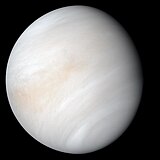Файл:PIA23791-Venus-RealAndEnhancedContrastViews-20200608 (cropped).jpg
Көрүнүш

Учурда көрсөтүлүүчү өлчөм: 600 × 600 пиксел Башка уруксаттар: 240 × 240 пиксел | 480 × 480 пиксел | 768 × 768 пиксел | 1 096 × 1 096 пиксел.
Түп нуска файл (1 096 × 1 096 пиксель, файлдын өлчөмү: 30 KB, MIME түрү: image/jpeg)
Файлдын тарыхы
Файлдын мурдагы нускасын көрүү үчүн тийиштүү убакыт/датаны басыңыз
| Убакыт/дата | Миниатюра | Өлчөм | Колдонуучу | Түшүндүрмө | |
|---|---|---|---|---|---|
| учурдагы | 23:40, 9 июль 2020 |  | 1 096 × 1 096 (30 KB) | PhilipTerryGraham | File:PIA23791-Venus-RealAndEnhancedContrastViews-20200608.jpg cropped 51 % horizontally using CropTool with precise mode. |
Шилтемелер
Бул файл төмөнкү баракта колдонулат:
Файлдын глобалдык колдонулушу
Бул файл төмөнкү викилерде колдонулат:
- ary.wikipedia.org сайтындагы колдонулушу
- arz.wikipedia.org сайтындагы колдонулушу
- ast.wikipedia.org сайтындагы колдонулушу
- as.wikipedia.org сайтындагы колдонулушу
- awa.wikipedia.org сайтындагы колдонулушу
- azb.wikipedia.org сайтындагы колдонулушу
- az.wikipedia.org сайтындагы колдонулушу
- ban.wikipedia.org сайтындагы колдонулушу
- bat-smg.wikipedia.org сайтындагы колдонулушу
- ba.wikipedia.org сайтындагы колдонулушу
- bcl.wikipedia.org сайтындагы колдонулушу
- be-tarask.wikipedia.org сайтындагы колдонулушу
- be.wikipedia.org сайтындагы колдонулушу
- bew.wikipedia.org сайтындагы колдонулушу
- bg.wikipedia.org сайтындагы колдонулушу
- bh.wikipedia.org сайтындагы колдонулушу
- bjn.wikipedia.org сайтындагы колдонулушу
- bn.wikipedia.org сайтындагы колдонулушу
- bo.wikipedia.org сайтындагы колдонулушу
- br.wikipedia.org сайтындагы колдонулушу
- bs.wikipedia.org сайтындагы колдонулушу
- btm.wikipedia.org сайтындагы колдонулушу
- bxr.wikipedia.org сайтындагы колдонулушу
- ca.wikipedia.org сайтындагы колдонулушу
- cdo.wikipedia.org сайтындагы колдонулушу
- ceb.wikipedia.org сайтындагы колдонулушу
- ce.wikipedia.org сайтындагы колдонулушу
- chr.wikipedia.org сайтындагы колдонулушу
- ckb.wikipedia.org сайтындагы колдонулушу
- co.wikipedia.org сайтындагы колдонулушу
- crh.wikipedia.org сайтындагы колдонулушу
- cr.wikipedia.org сайтындагы колдонулушу
- csb.wikipedia.org сайтындагы колдонулушу
- cs.wikipedia.org сайтындагы колдонулушу
- cu.wikipedia.org сайтындагы колдонулушу
- cv.wikipedia.org сайтындагы колдонулушу
- cy.wikipedia.org сайтындагы колдонулушу
- dag.wikipedia.org сайтындагы колдонулушу
- da.wikipedia.org сайтындагы колдонулушу
- de.wikipedia.org сайтындагы колдонулушу
- dga.wikipedia.org сайтындагы колдонулушу
- din.wikipedia.org сайтындагы колдонулушу
- diq.wikipedia.org сайтындагы колдонулушу
- dsb.wikipedia.org сайтындагы колдонулушу
- dty.wikipedia.org сайтындагы колдонулушу
- el.wikipedia.org сайтындагы колдонулушу
Бул файлдын глобалдык колдонулушун көрүү.




